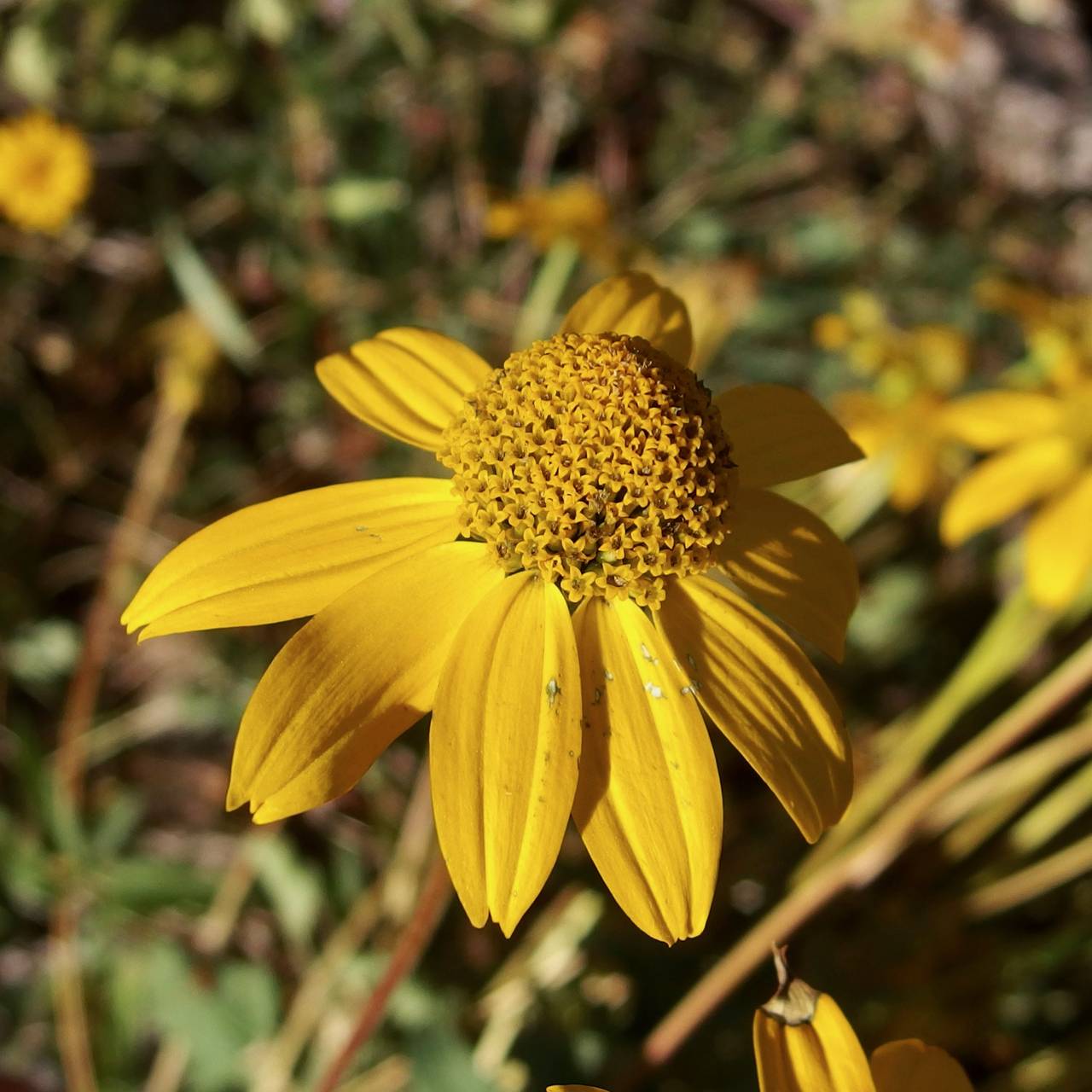Heliopsis
|
Family: Asteraceae |
Perennials [annuals], 30-150 cm. Stems erect or trailing, branched from bases or ± throughout. Leaves cauline; opposite; petiolate; blades ± 3-nerved from bases, deltate or ovate to lanceolate, bases ± cuneate to subtruncate, margins serrate or coarsely toothed, faces glabrous or hairy. Heads radiate [discoid], borne singly. Involucres turbinate to hemispheric, 8-14 mm diam. Phyllaries persistent, 12-20 in 2-3 series (ovate or oblong, ± equal, outer more foliaceous than inner). Receptacles convex to conic, paleate (paleae tardily falling, yellowish, conduplicate, becoming chartaceous). Ray florets [0] 5-20, pistillate, fertile; corollas yellow to orange (laminae persistent, sessile, becoming papery). Disc florets 30-150+, bisexual, fertile; corollas yellow or brown to purple, tubes much shorter than narrowly cylindric throats, lobes 5, deltate. Cypselae (brown to black-brown) subterete or obscurely 3(ray)- or 4(disc)-angled (not winged); pappi 0, or persistent, coroniform (each a laciniate crown plus 1-3 toothlike scales). x = 14. Most species of Heliopsis are known only from Mexico.
Heads radiate, the rays yellow, pistillate and fertile, persistent and becoming papery; invol bracts herbaceous at least distally, in 1-3 subequal series, or the outer ones enlarged and leafy; receptacle convex to conic, chaffy throughout, its bracts concave and clasping, subtending the rays as well as the disk-fls; disk-fls perfect and fertile; style-branches flattened, with a short, hairy appendage; achenes nearly equably quadrangular (or those of the rays triquetrous); pappus none, or a short irregular crown or a few teeth; herbs with opposite, petiolate lvs. (Kallias) 13, New World. Gleason, Henry A. & Cronquist, Arthur J. 1991. Manual of vascular plants of northeastern United States and adjacent Canada. lxxv + 910 pp. ©The New York Botanical Garden. All rights reserved. Used by permission. |

